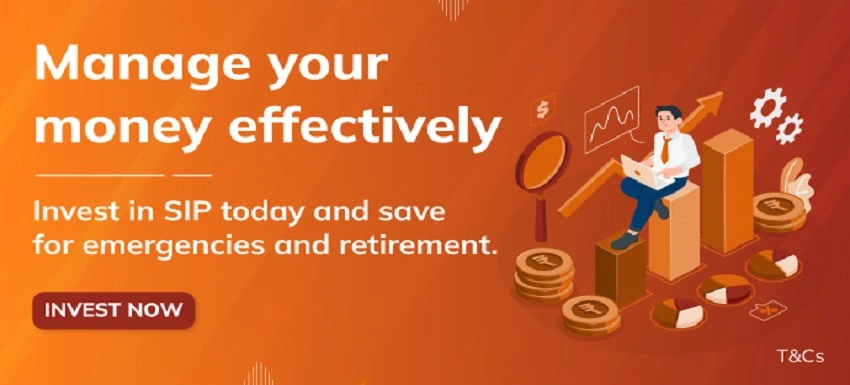THE
ORANGE
HUB
Is It A Smart Investment Strategy To Invest In Smart Beta Funds

When it comes to investing, there are many options to choose from and one of them is ‘Smart Beta Funds.’ What exactly are these funds and should you consider them in your investment strategy? In this blog, we will explore Smart Beta Funds in simple terms, break down their advantages and disadvantages and help you decide if they are a smart choice for your portfolio.
Understanding Smart Beta Funds
Smart Beta Funds are a unique breed in the world of investing. They combine elements of both active and passive investing strategies. In a nutshell, Smart Beta Funds aim to beat the market or achieve specific investment objectives without relying solely on traditional methods. They use a set of predefined rules or strategies to pick and weigh stocks rather than simply mirroring an existing market index like most passive funds.
Advantages of Smart Beta Funds
Now, let us dive into why Smart Beta Funds might be an attractive option for investors like you:
Enhanced diversification
Smart Beta Funds often have a more diversified portfolio compared to traditional actively managed funds. This diversification can help spread risk across various assets, reducing the impact of a single underperforming investment.
Lower costs
Smart Beta Funds generally come with lower fees compared to actively managed funds. They aim to provide investors with the benefits of active management without the high expense ratios.
Rule-based strategies
These funds operate on transparent and predefined rules, eliminating human emotions from the investment process. This can lead to more consistent decision-making.
Specific investment goals:
Smart Beta Funds can be tailored to meet specific investment objectives. Whether you are looking for income, growth or value, there is likely a Smart Beta Fund designed to match your goals.
Historical outperformance
Some Smart Beta strategies have shown a history of outperforming traditional market indices. They appeal to investors seeking higher returns.
Disadvantages of Smart Beta Funds
While Smart Beta Funds have their merits, they are not without drawbacks.
Lack of active flexibility
Smart Beta Funds are not entirely active, so they may not adapt swiftly to changing market conditions or emerging opportunities.
No guarantees
Just like any other investment, Smart Beta Funds come with risks and past performance is no guarantee of future results. Some strategies may underperform or experience losses.
Complexity
The rules and strategies used by Smart Beta Funds can be complex for the average investor to grasp fully. This complexity can make it challenging to assess whether a specific strategy aligns with your goals or not.
Limited track record
Some Smart Beta strategies have a limited track record, making it difficult to evaluate their long-term performance and reliability.
Is Smart Beta right for you?
The most important question is, should you consider investing in Smart Beta Funds? The answer depends on your individual circumstances and investment goals.
When Smart Beta makes sense
Diversification
Smart Beta Funds shine when aiming for a well-rounded portfolio without breaking the bank on fees. They offer a cost-effective way to diversify your investments across various assets.
Specific goals
If your investment objectives are clear, like targeting value or generating income, Smart Beta Funds can be customised to align perfectly with these goals.
Risk tolerance
If you are at ease with the inherent risks of investing and have a long-term outlook, Smart Beta Funds can provide a balanced approach, combining elements of both active and passive strategies to suit your risk appetite.
When to be cautious
Lack of understanding: If Smart Beta strategies are too complex or challenging to understand, it might be best to stick with simpler investment options.
Short-term goals: If you have short-term investment goals or need liquidity in the near future, Smart Beta Funds may not align with your needs.
Preference for full control: If you prefer hands-on control of your investments, Smart Beta Funds may not provide the flexibility you desire.
Exploring Smart Beta factors: The building blocks of returns
Smart Beta Funds rely on specific factors to construct their portfolios. These factors are like the secret ingredients that determine a fund's performance. Let us take a closer look at some of these factors and how they are usually captured:
Value
This factor seeks out low-priced stocks relative to their fundamental value. Metrics like the P/E ratio, P/B ratio, P/S ratio and Dividend Yield are commonly used to identify undervalued companies.
Dividend yield
Companies with above average and growing Dividend Yields are favoured in this factor. It is all about finding stocks that provide consistent income to investors.
Size
Market capitalisation plays a key role here. Companies are categorised based on their total or free-float market capitalisation.
Momentum
Momentum focuses on stocks with strong past performance over the preceding months. It considers point-to-point past returns and historical alpha as indicators.
Low volatility
This factor targets stocks with below-average volatility. It takes into account metrics like standard deviation, downside standard deviation, beta and more.
Quality
Quality factors examine stocks with strong profitability characteristics. Metrics like return on equity, return on capital employed, earnings stability, dividend growth, balance sheet strength, low financial leverage, cash flows and more are considered.
Understanding that these factors are not rigid and can vary between Mutual Fund companies is important.
Smart Beta Funds can be a smart addition to your investment portfolio, offering diversification, cost-efficiency and tailored strategies. However, like any investment, they come with unique risks and may not suit every investor. It is essential to assess your financial situation, goals and risk tolerance before deciding whether Smart Beta Funds are the right choice.
Scroll to top











